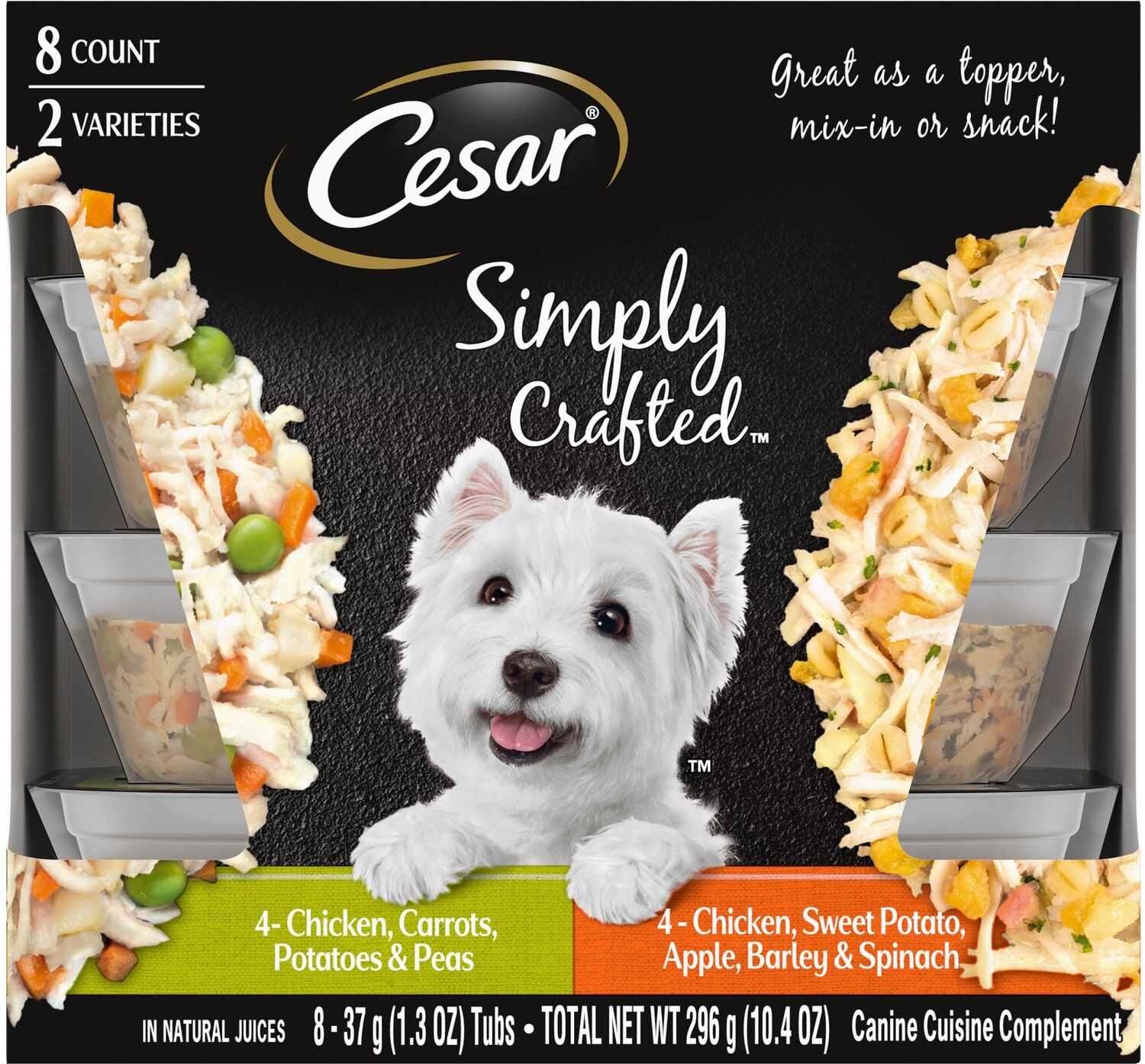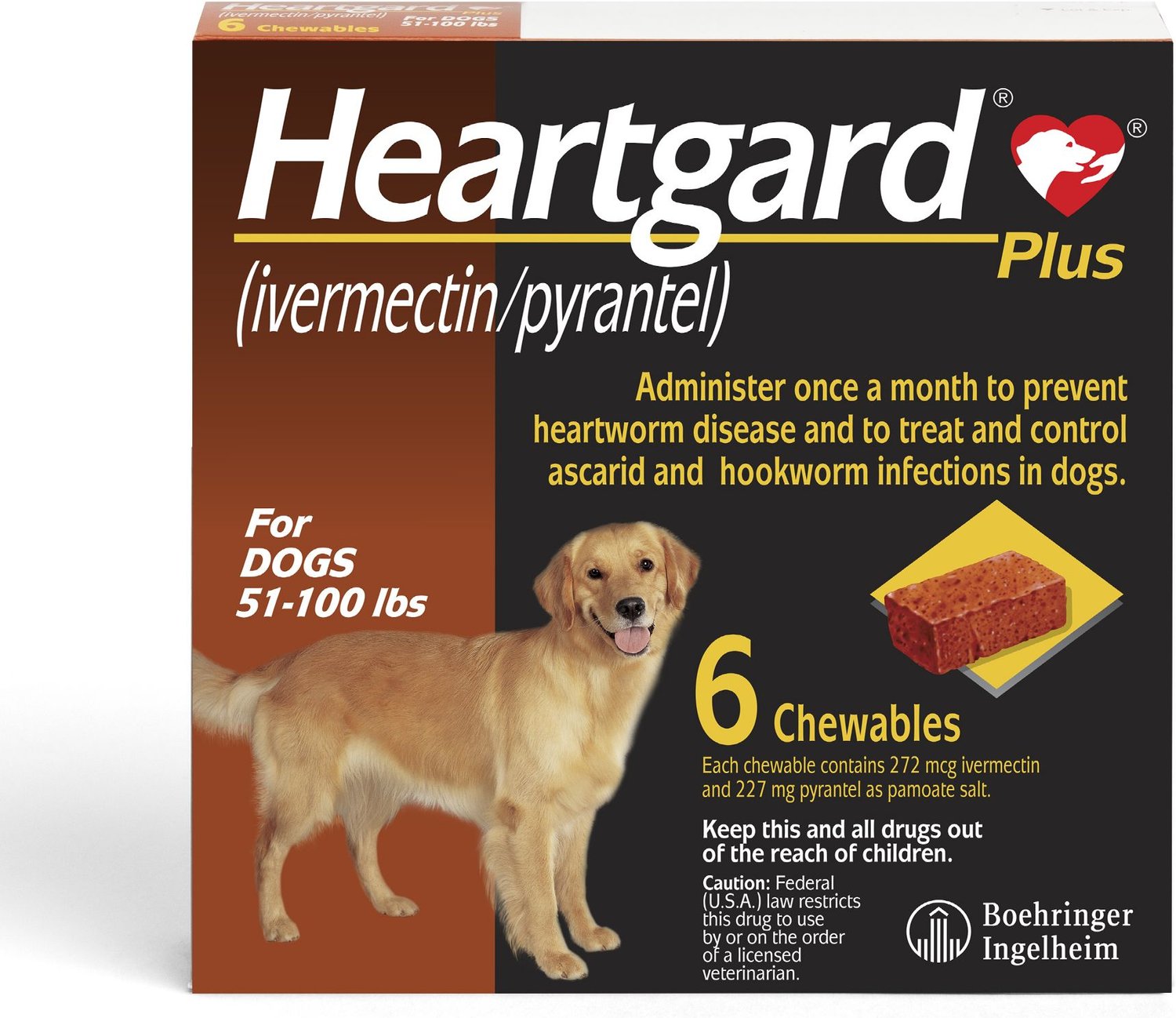Cesar Simply Crafted Variety Pack Chicken, Carrots, Potatoes & Peas & Chicken, Sweet Potato, Apple, Barley & Spinach Limited-Ingredient Wet Dog Food Topper, 1.3-oz, pack of 8
Add the delicious taste of real meat and veggies to your precious pup’s next meal with Cesar Simply Crafted Variety Pack Chicken, Carrots, Potatoes & Peas & Chicken, Sweet Potato, Apple, Barley & Spinach Limited-Ingredient Wet Dog Food Topper.
Add the delicious taste of real meat and veggies to your precious pup’s next meal with Cesar Simply Crafted Variety Pack Chicken, Carrots, Potatoes & Peas & Chicken, Sweet Potato, Apple, Barley & Spinach Limited-Ingredient Wet Dog Food Topper. Featuring real chicken as the very first ingredient, these wholesome toppers will add paw-sitively irresistible variety to your dog’s dry kibble. Crafted with real foods and nothing else, they contain no artificial colors, flavors, fillers, or preservatives. And, they come in convenient tubs with no-fuss, peel-away freshness seals, so it’s easy to unlock more shared moments of joy between you and your furry friend.
Key Benefits
- Simple, wholesome topper adds irresistible flavor and variety to your pup’s regular food.
- Helps entice a picky pooch to eat her regular kibble, and provides an additional source of hydration.
- Contains no more than five ingredients–real chicken in natural juices, along with real fruit and veggies, for a delicious taste she’ll love.
- No artificial colors, flavors, fillers, or preservatives–just simple, whole food ingredients you know and trust.
- No-fuss, peel-away freshness seals are fast and easy to open; variety pack contains 4 tubs each of Chicken, Carrots, Potatoes & Peas and Chicken, Sweet Potato, Apple, Barley & Spinach.
Additional information
| Ingredients | Chicken, Carrots, Potatoes & Peas: Chicken, Carrots, Potatoes, Peas. Chicken, Sweet Potato, Apples & Spinach: Chicken, Sweet Potatoes, Apples, Water, Barley, Spinach. |
|---|---|
| WEIGHT | 10.4 ounces |






by Skeeter
My toy fox terrier is 15 had all his teeth pulled this past summer and I mix this with his dog food and he just loves it.
by Pearls
Food was promptly delivered unfortunately my senior dog wouldn’t eat it. Chewy helped me find a replacement promptly delivered which she loves. They also suggested I donate the first order which I promptly gave to a friend who was having difficulty feeding her dog due to work loss. What a kind company!
by Okie
I have 4 picky dogs. Its hard to get them to eat at times I found these at a pet store and decided to try them They are the perfect portion to add over dry food. My dogs love them! I’m so happy I found them on chewy so now its added to my auto ship.
by Sophie
My Sophie is old (14) & lost some teeth & my vet said to put her on food that is small since she is little anyway, so the Simply Crafted & Mins are perfect. She’s back to eating with gusto.
by Annette
My little dachshund diva turns her nose up at just about everything, but she always cleans her plate when I serve this.
by Sam
My dog is a picky eater. I had bought Cesar’s Wholesome Bowls at the store and she liked it, so I tried this product. Although there are more ingredients, they are similar to the other line. While I think they smell good like real chicken, she didn’t like the extra ingredients and only picked at them.
by Angel
We have one very picky dog that has trouble with beef. She loves this meal and we mix it with other food, I wish they made this in bigger portions.
by Carol
My papillon loves it. She won’t eat anything else.